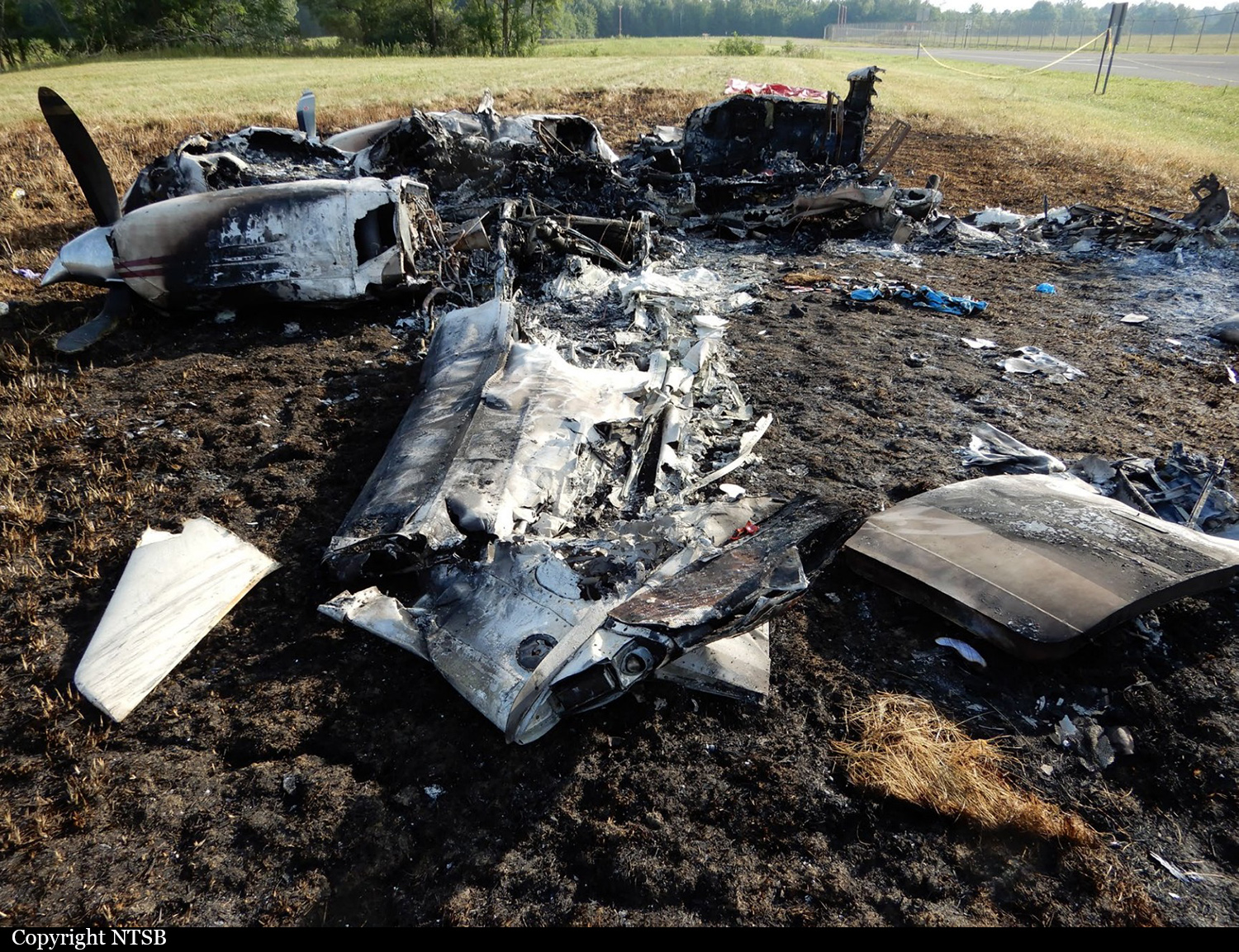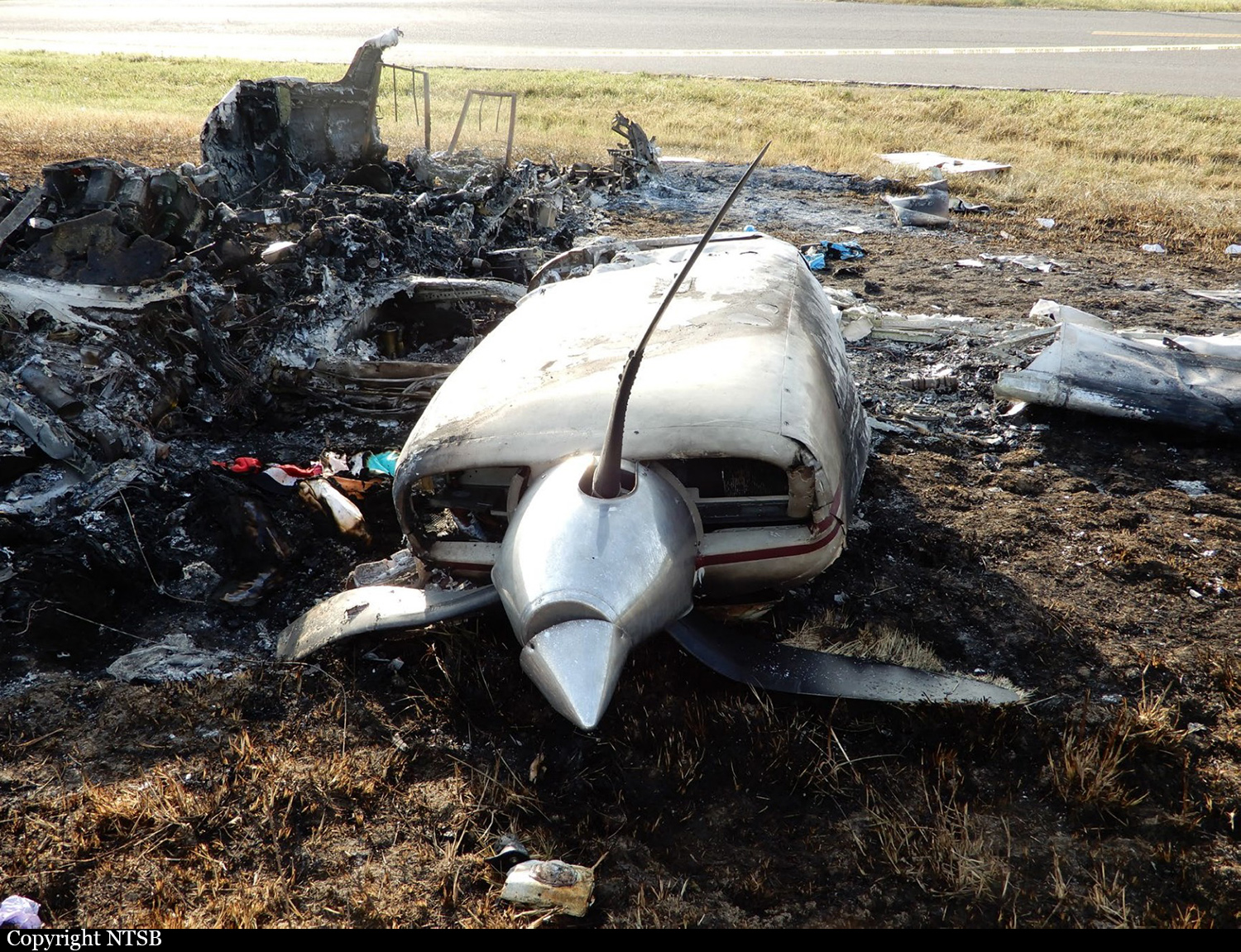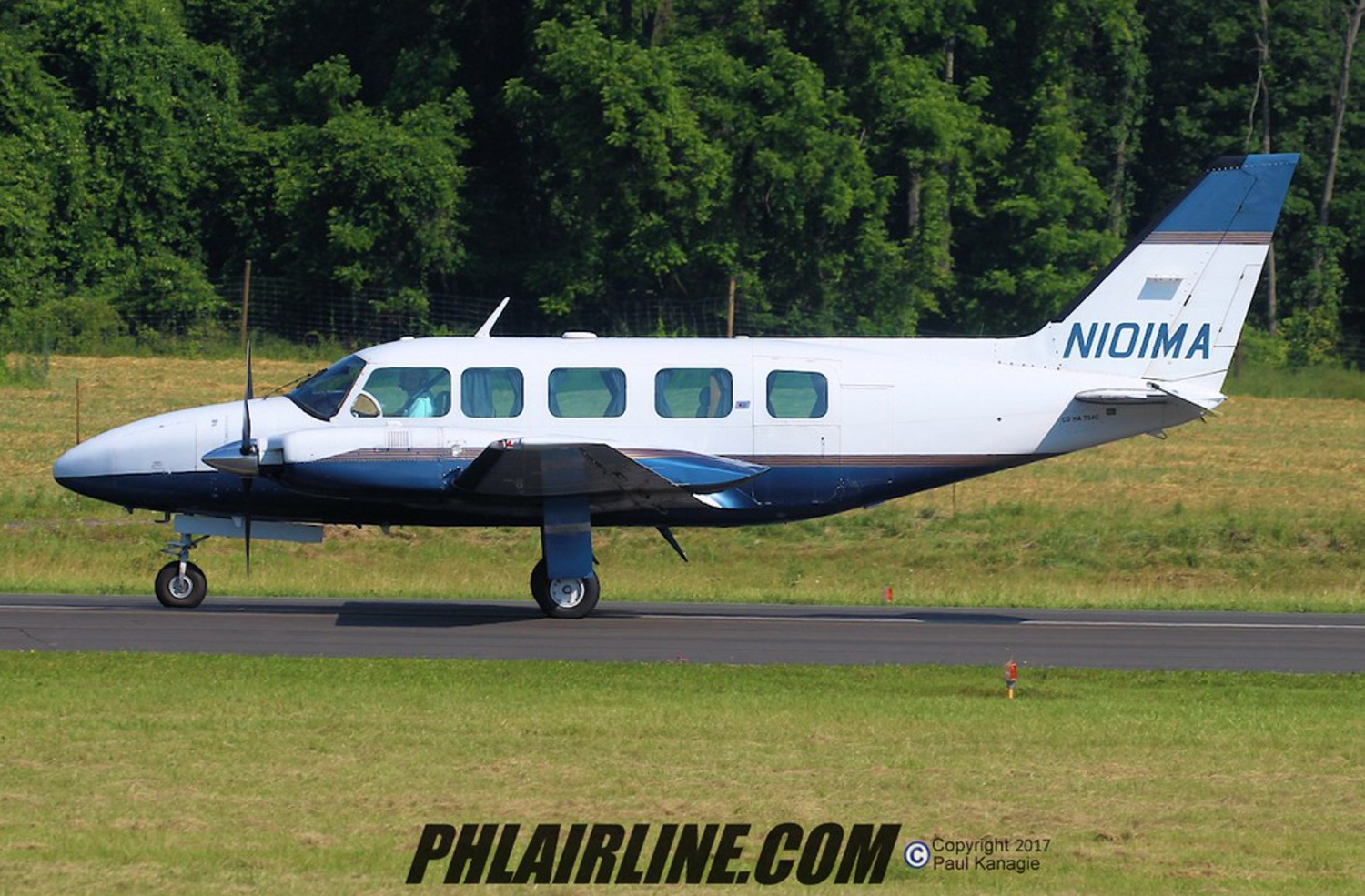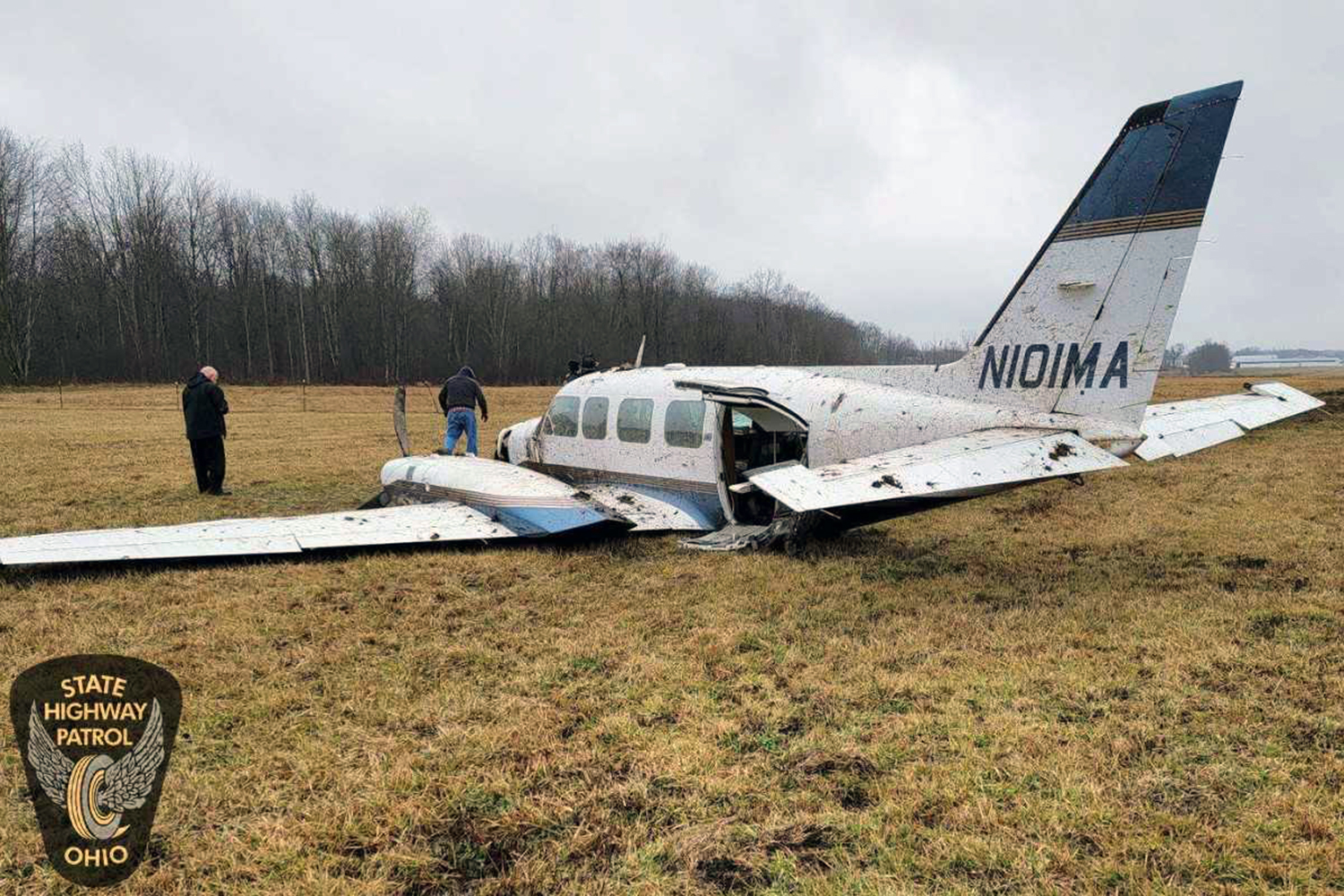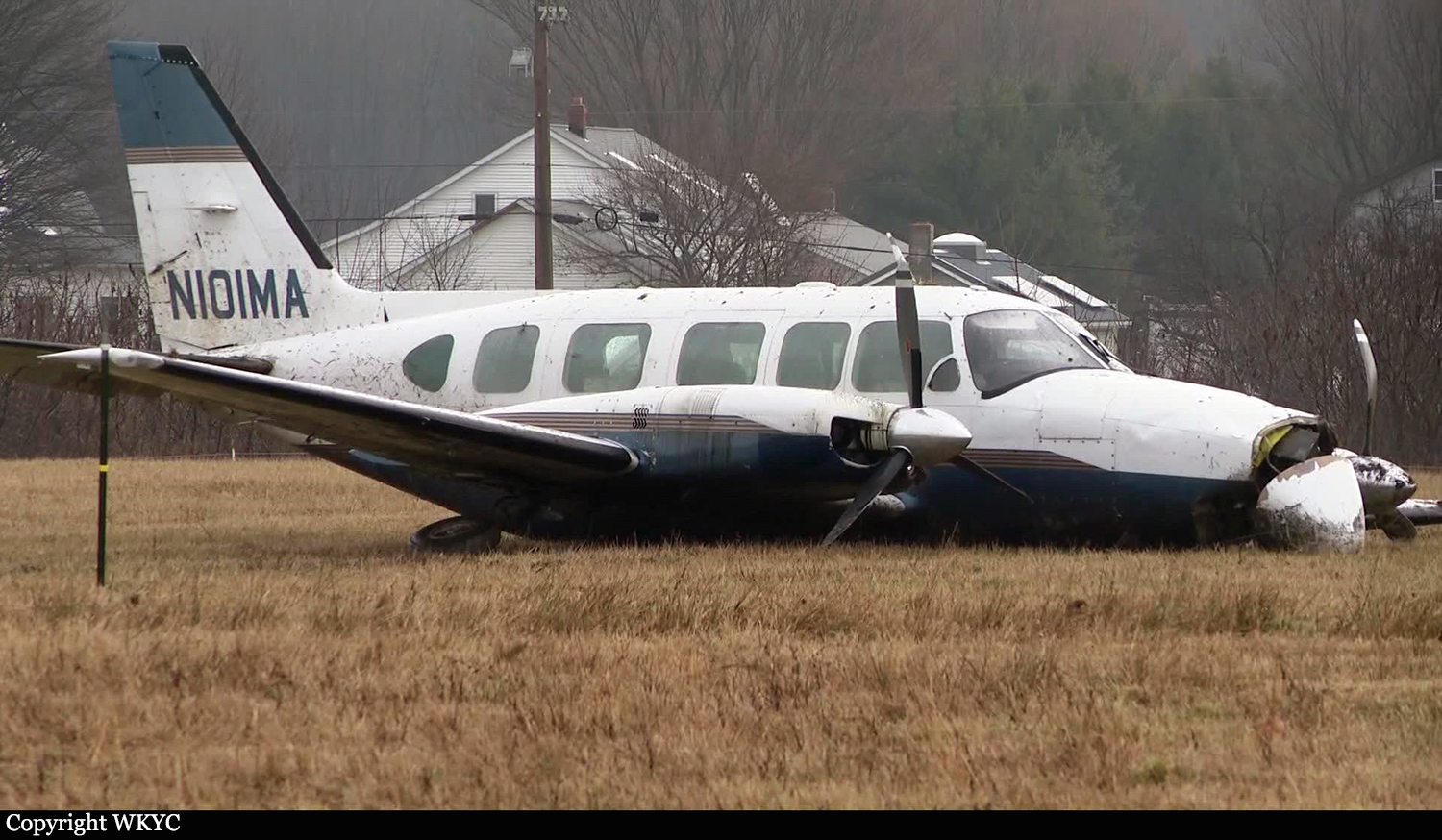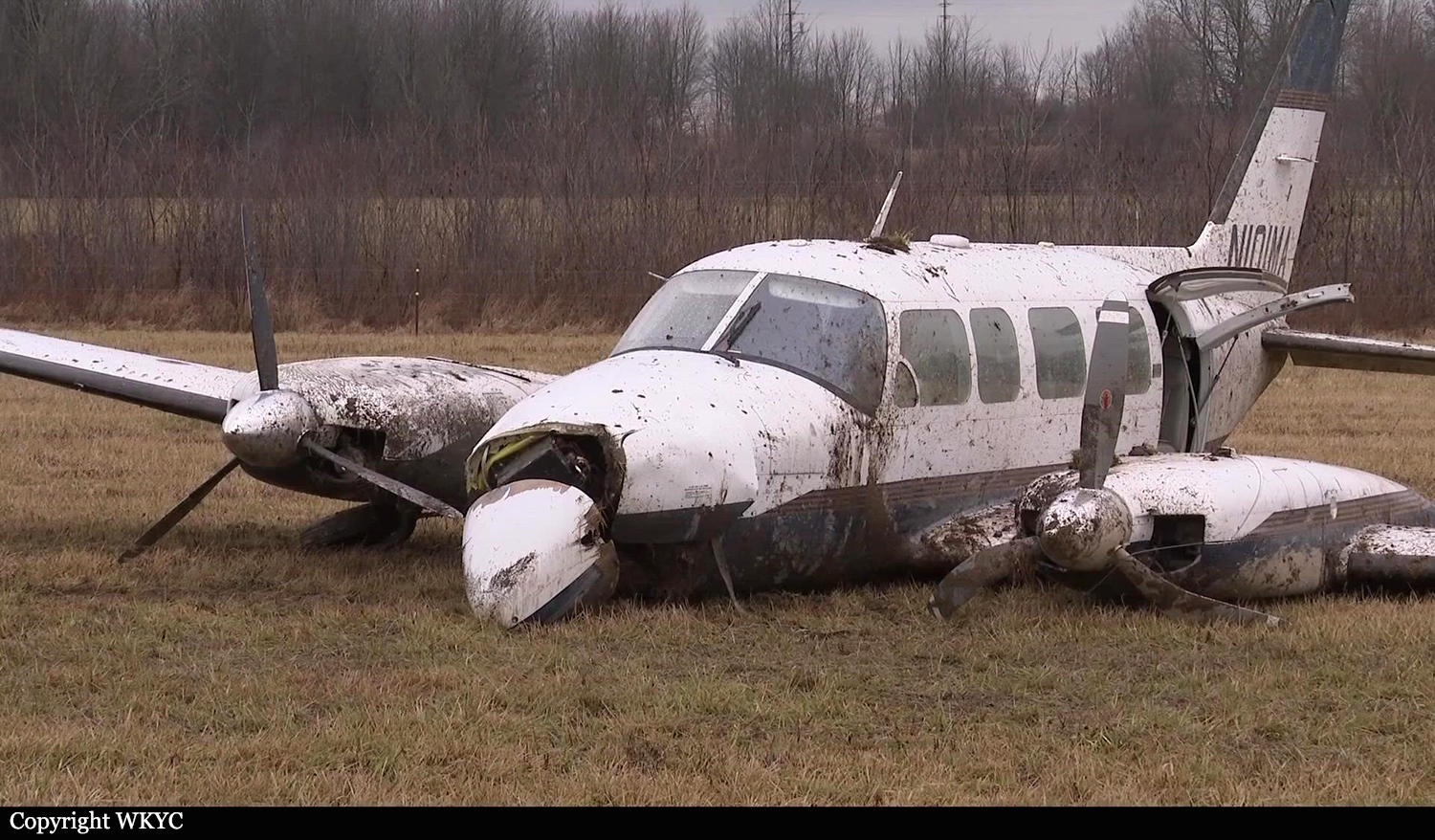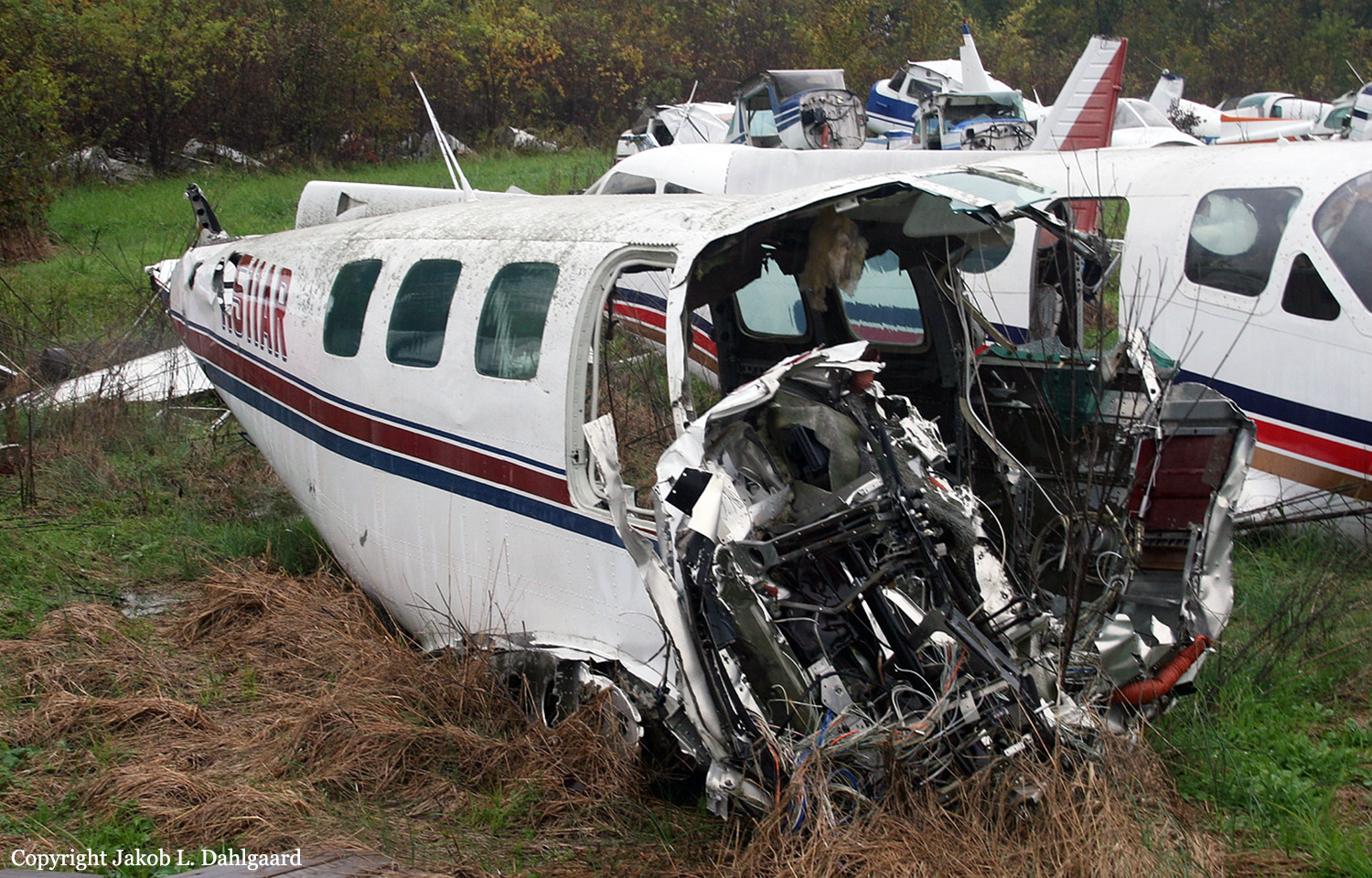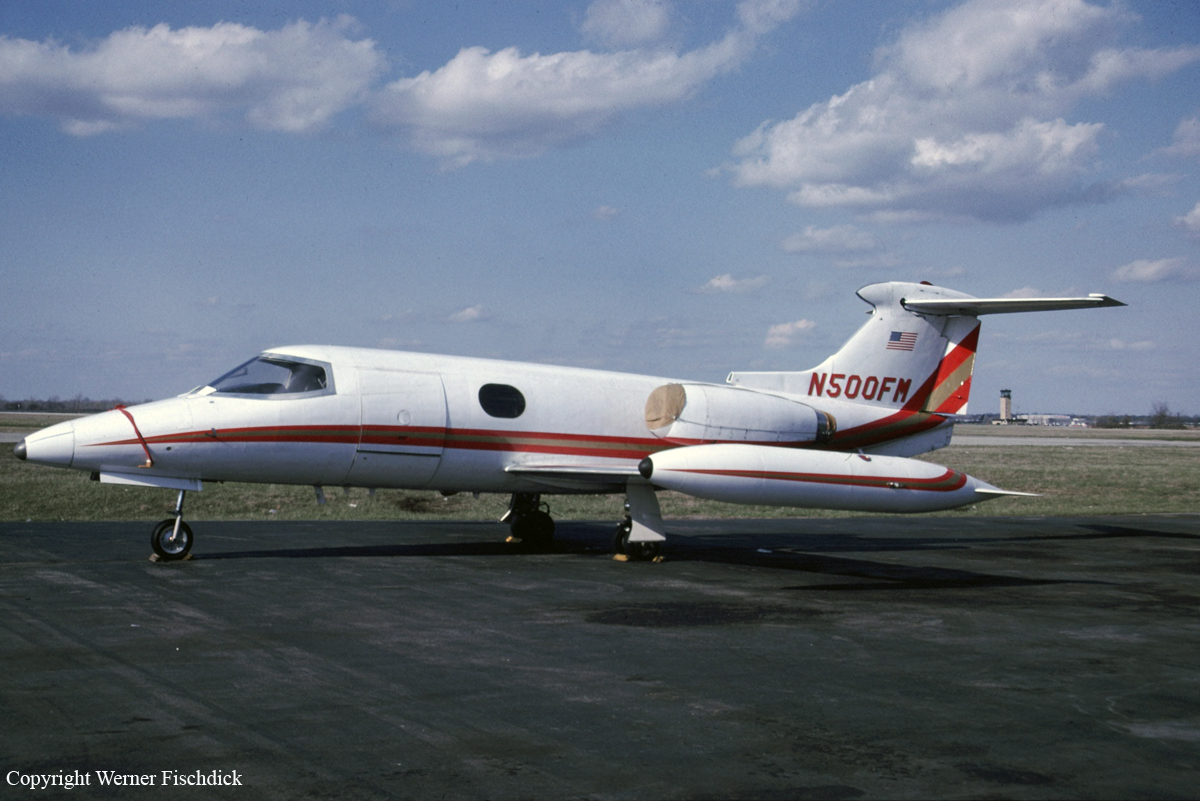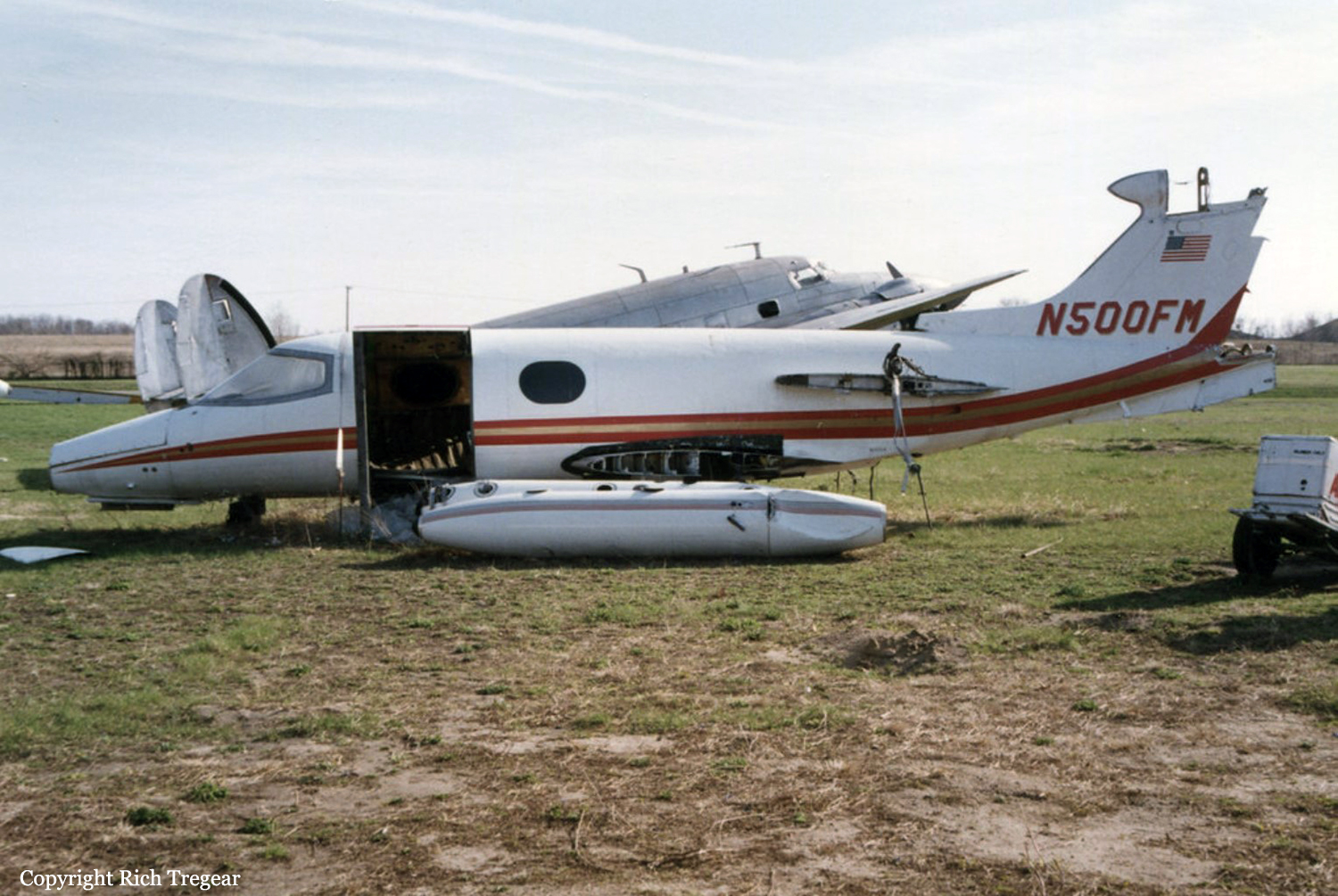Crash of a Cessna 441 Conquest in Youngstown: 6 killed
Date & Time:
Jun 29, 2025 at 0654 LT
Registration:
N441LS
Survivors:
No
Schedule:
Youngstown - Bozeman
MSN:
441-0342
YOM:
1984
Crew on board:
1
Crew fatalities:
Pax on board:
5
Pax fatalities:
Other fatalities:
Total fatalities:
6
Circumstances:
The twin engine airplane departed Youngstown-Warren Airport Runway 32 at 0653LT on a 5,5-hours flight to Bozeman, MT, carrying five passengers and one pilot. After takeoff, while in initial climb, the airplane initiated a left turn then started to descend until it crashed in the backyard of a private property located about 2 km northwest of the airfield. The accident occurred about one minute after liftoff. The airplane was destroyed and all six occupants were killed.



